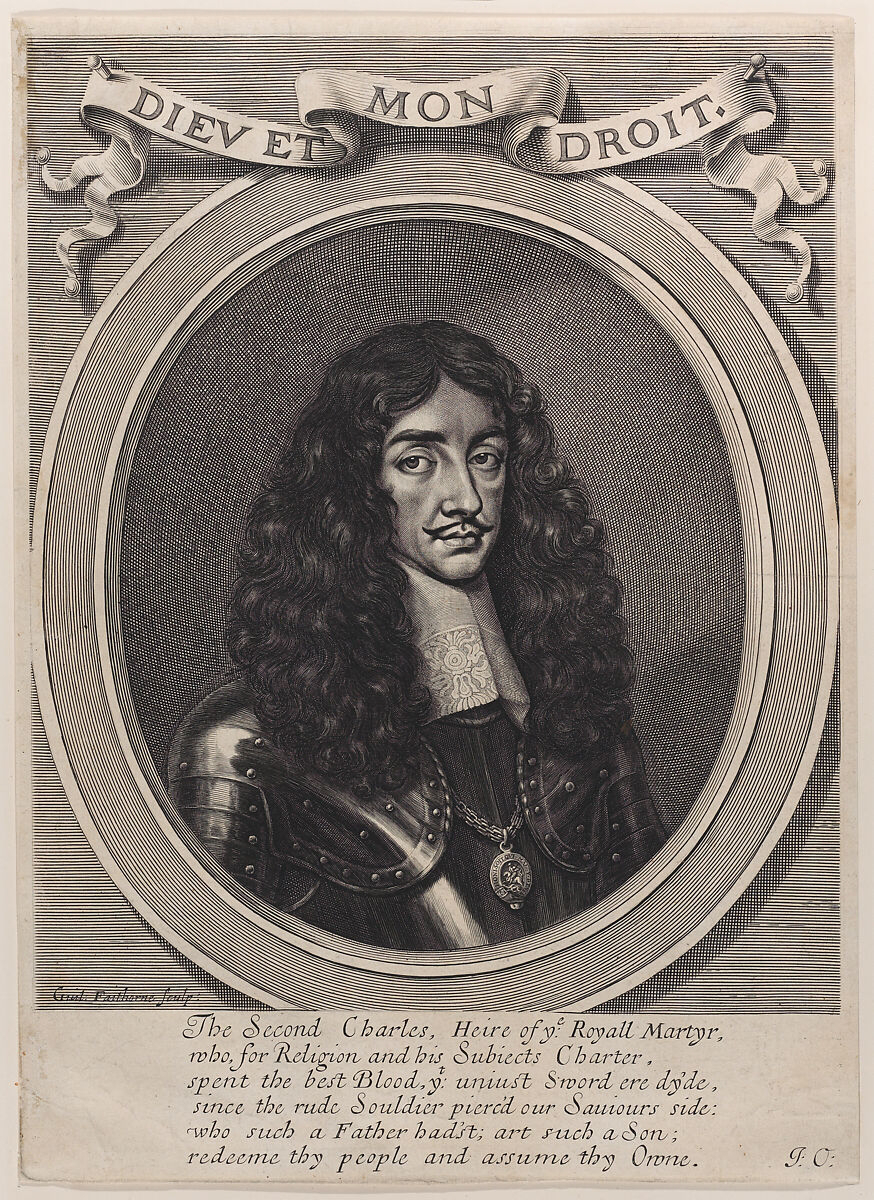Picture: William Faithorne the Elder, London c1660~1670. Metropolitan Museum of Art, New York.
King Charles II, the exuberant Stuart Sovereign was crowned on St George's Day 23rd April 1661. The ritualistic ceremony was the most lavish coronation since Elizabeth I and ignited an era of momentus advancement in Broadland, Britain and the realms overseas. Science, the arts, commerce and even politics flourished. In this tumultuous sphere, radical fractions plotted in the unlikely setting of the brand new coffee shops in the City of London. Many rebels went too far even for the rather libertine Restoration Court; ending their days in the dreaded precincts of the bloody White Tower of London.
The King's reign was marked by major maritime improvements. The first Royal Jacht or Yacht HMY Mary, named after Charles' sister Princess Royal was only fifty feet in length. Gifted by our Dutch allies in 1660, the richly gilt decorated ship was significant because she introduced the sport of pleasure boating to these islands. Charles soon tired of the repetitive yacht racing on the tidal Thames, but the passion for yachting had found a following.
The merchant fleet had rallied in the uncertain Tudor age with merchant adventurers or privateers. Ever more fruitful voyages continued apace. Following in the wake of a pair of French explorers meeting with Charles; a party of nobles led by the gregarious cavalier war hero Prince Rupert of the Rhine and cousin of Charles Stuart set sail to North America to found the chartered Hudson Bay Company, the first and longest established trading company in the world, albeit a ruthless cartel. Buck and beaver pelts ~ for the booming hat trade and wool blankets for snowy climes were staples of the enterprise. Similarly, mercantile base New York sited on the southern part of the indigenous Mannahatta island was rebranded New Amsterdam in a trade off with the Dutch. Cranky James, Duke of York was the first governor and gave his titled name to the rocky outcrop.
As part of her dowry, tea drinking devotee Catherine of Braganza, Queen Consort of Charles brought the Portuguese outpost of 'Bom Bahia' (Bombay) on the western coast of India, present day Mumbai into British custody. The settlement was passed onto the East India Company. Later the vast sub continent morphed into the complex British Raj ~ the Rt Hon Prime Minster Benjamin Disraeli's "Jewel in the Crown of the British Empire".
King Charles lived much of time in the capital beside the River Thames ~ his private bed chamber at the rambling Palace of Whitehall overlooked the river. Around 7.30am on the day of the Coronation Charles descended the Privy Stairs of Whitehall to embark on the royal row barge, taking the short journey to Parliament Stairs at the Palace of Westminster whereupon he proceeded to Princes Lodgings to be robed for the formal ceremonies in the adjacent Abbey.
In the middle of Charles' reign a local Act of Parliament created the Great Yarmouth Harbour Commissioners, run by local merchants and aldermen of the borough. The maritime board went on to manage the port and collect dues from trading vessels. Later 18th century acts enabled a more efficient administration of the river arteries of Broadland, coupled with expansion of urban wharves.
Chris


No comments:
Post a Comment